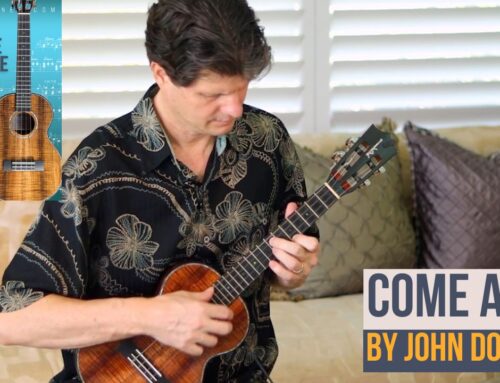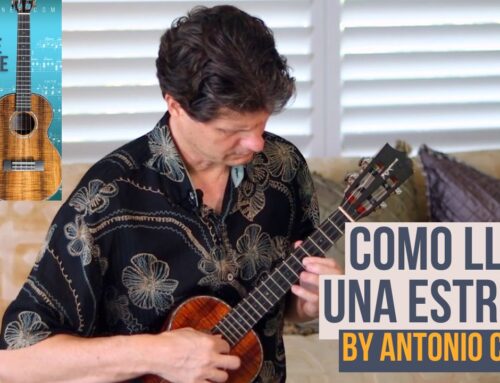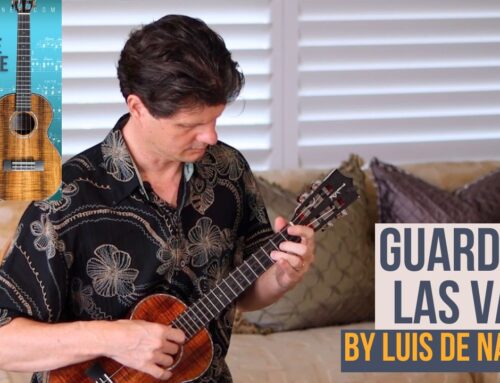Antonio Vivaldi’s Andante from the Concerto for 2 Mandolins (RV 532) is a beautifully lyrical Baroque movement that adapts remarkably well to ukulele. Written while Vivaldi taught at the Ospedale della Pietà, this slow, expressive Andante offers elegant melodic lines, subtle ornamentation, and clear opportunities for phrasing and dynamics — perfect for intermediate players seeking classical repertoire.
History
Antonio Vivaldi (1678–1741), a leading late-Baroque composer and virtuoso violinist, produced much of his music while teaching at the Ospedale della Pietà in Venice. Although best known for violin concertos such as The Four Seasons, Vivaldi wrote for many instruments used at the Ospedale — including the mandolin. He wrote two mandolin concertos: the solo mandolin Concerto in C major (RV 425) and the Concerto for Two Mandolins in G major (RV 532), whose Andante movement is the focus here.
Why this Andante works on ukulele
The Andante’s slow tempo, clear counterpoint, and repeated phrases make it ideal for a ukulele adaptation. Melodic lines sit comfortably on the fretboard, and the interplay between harmony and ornamentation translates well to fingerstyle technique.
Performance notes (practical tips)
-
Tempo & feel: Aim for an eighth-note pulse ≈ 65 bpm. Many performers take it as largo/Andante — steady, expressive, not rushed.
-
16th-note triplets: Treat them like slower eighth-note triplets — don’t force them too fast. The musical effect comes from clarity, not speed.
-
Right-hand fingering: Use alternating index/middle for the melody while the thumb provides a steady bass eighth-note pulse. For three-note chords, add the thumb as needed.
-
Unison E on beat 2: Slightly separate the two unison E notes with a small roll for expression.
-
Repeats & variation: Since the piece uses repeated phrases, try tonal contrast: play the first statement full, and the repeat as an echo (softer or with different voicing).
-
Measure 6–7 (build & release): Crescendo into measure 7, then decrescendo to release the phrase. At measure 7 the rhythm shifts to even 16ths — count carefully and highlight the trill on beat 3.
-
Dotted rhythms (second half): Play dotted patterns with full precision and slightly more volume for contrast before returning to triplets.
-
Cadences & ending: Expect a Vivaldi-style harmonic cycle building into a cadential trill (measure 13). End the final cadence softly, then crescendo into the closing flourish between E and D#.
Right-hand technique & fingerings
Follow a consistent right-hand pattern: thumb for bass, index/middle alternating for melody. On repeated Em chords (measure 17), move cleanly between strings and use the thumb for three-note positions. Start softly, then build for a satisfying final cadence.
Tips for expression & practice
-
Count subdivisions aloud (1 e & a) during rhythm changes.
-
Record yourself and compare repeat dynamics — small changes make a big musical difference.
-
Practice trills slowly, gradually increasing speed while keeping pitch steady.
Graded Repertoire for Classical Ukulele: Volume 2
Vivaldi’s Andante comes from our book Graded Repertoire for Classical Ukulele: Volume 2. The book has around 50 pieces of classical masterpieces carefully arranged for low-G ukulele in a progressive order. Starting with simple famous melodies like Bach’s Minuet in C, you progress step-by-step all the way through to classical favorites such as Fauré’s Pavane and Leyenda by Issac Albéniz.
Pick up your copy of Graded Repertoire for Classical Ukulele: Volume 2 here.





Leave A Comment